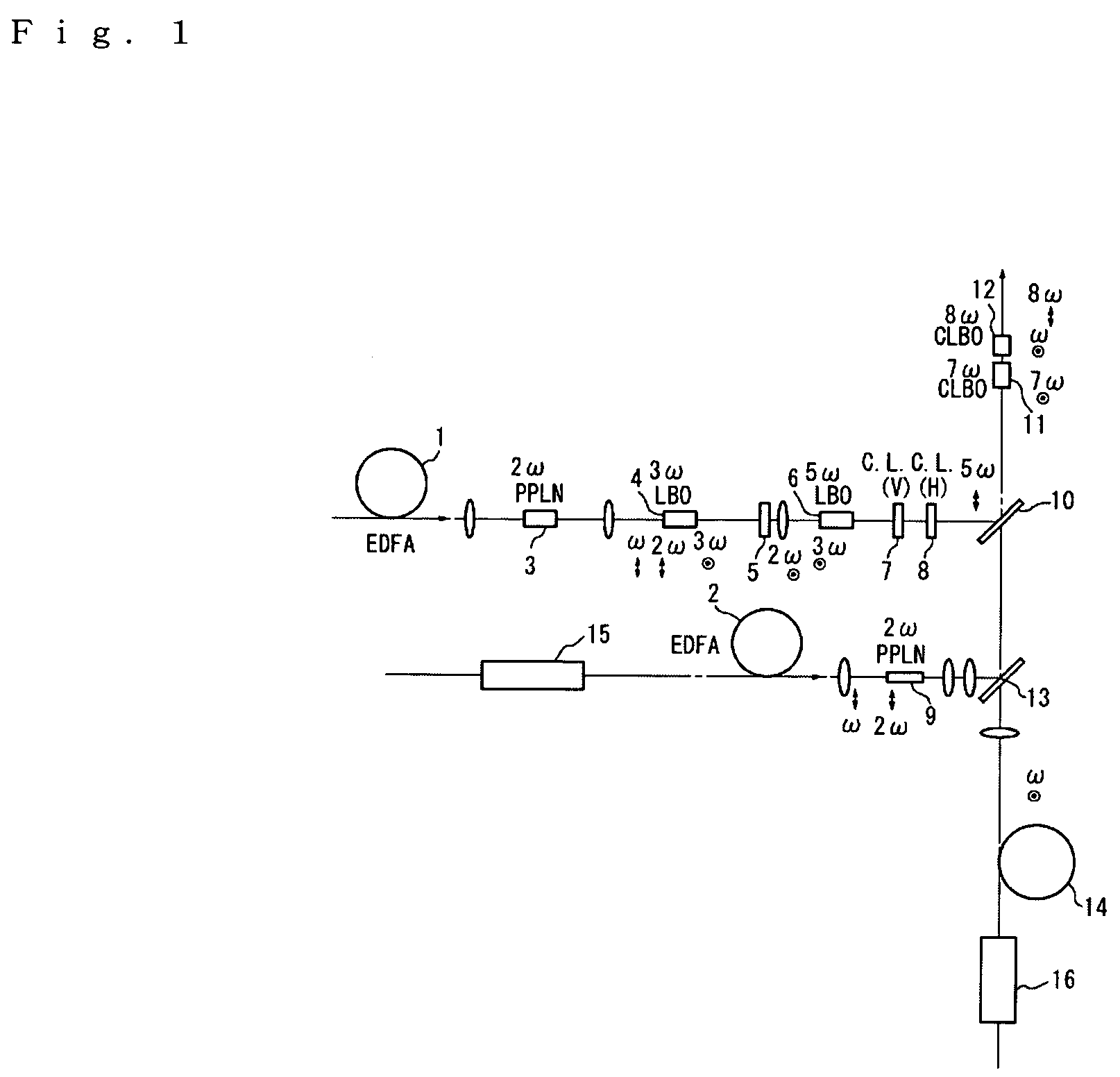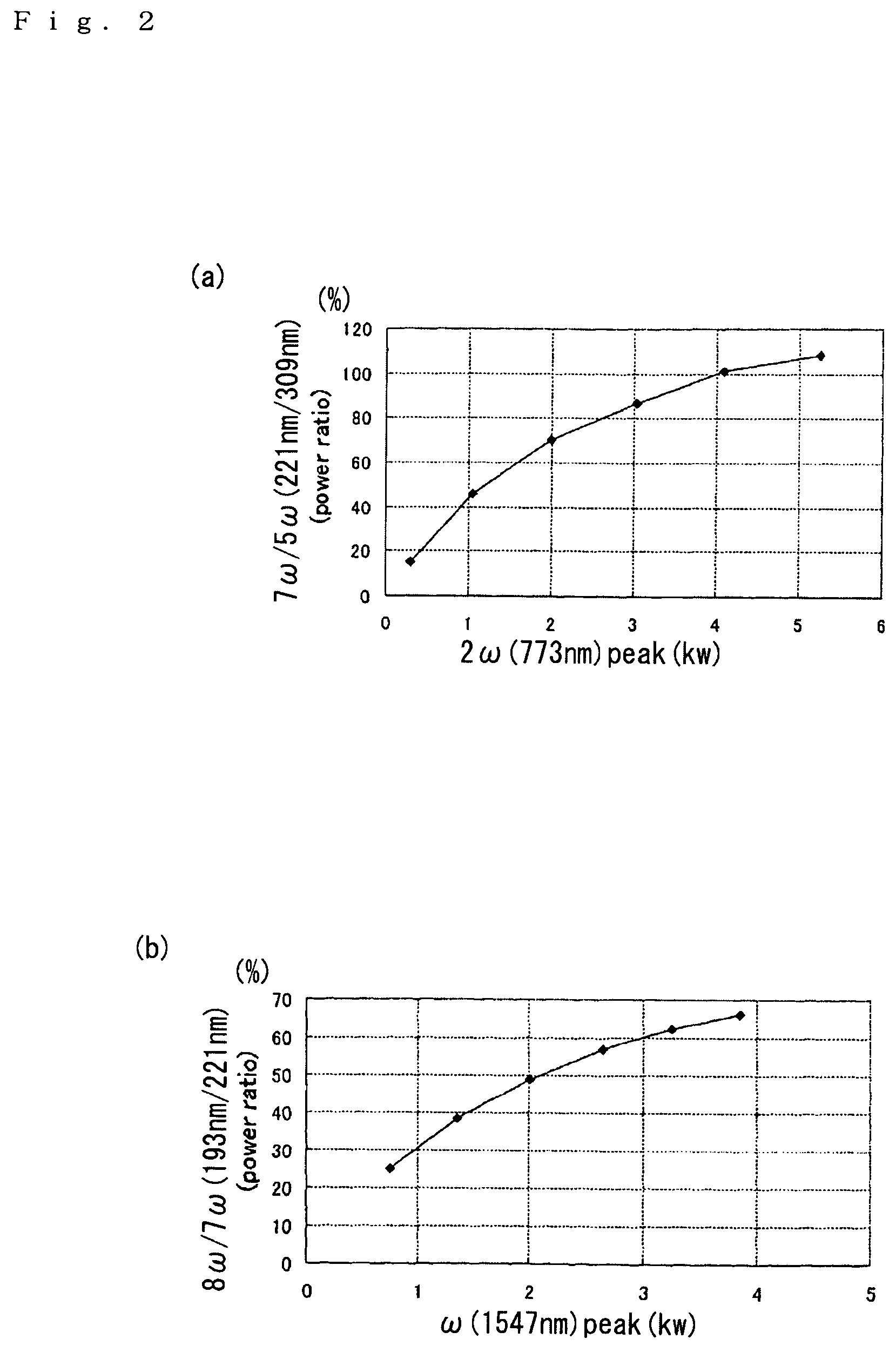Wavelength converting optical system, laser light source, exposure apparatus, device for inspecting object of inspection, and polymer crystal working apparatus
a wavelength conversion and optical system technology, applied in the direction of light demodulation, instruments, laser details, etc., can solve the problems of inability to meet the needs of inspection, too long wavelength to be suitable for use, and large size of the apparatus,
- Summary
- Abstract
- Description
- Claims
- Application Information
AI Technical Summary
Benefits of technology
Problems solved by technology
Method used
Image
Examples
Embodiment Construction
[0031]Working configurations of the present invention will be described below with reference to the figures. FIG. 1 is a diagram showing an outline of the optical system of a laser apparatus constituting a first working configuration of the present invention. In FIGS. 1 and 4, the objects indicated by oval shapes are collimator lenses and focusing lenses; an explanation of these lenses is omitted. Furthermore, P polarization is indicated by an arrow symbol, S polarization is indicated by symbols showing a dot inside a circle, the fundamental wave is indicated by ω, and n-th waves are indicated by nω.
[0032]In this working configuration, the fundamental wave (wavelength: 1547 nm) emitted from a single DFB laser (not shown in the figures) branches into three waves, which are respectively amplified by a first EDFA 1, second EDFA 2, and third EDFA 14. However, it would also be possible to amplify fundamental waves emitted from three DFB lasers by means of respective EDFAs. As is shown in...
PUM
 Login to View More
Login to View More Abstract
Description
Claims
Application Information
 Login to View More
Login to View More - R&D
- Intellectual Property
- Life Sciences
- Materials
- Tech Scout
- Unparalleled Data Quality
- Higher Quality Content
- 60% Fewer Hallucinations
Browse by: Latest US Patents, China's latest patents, Technical Efficacy Thesaurus, Application Domain, Technology Topic, Popular Technical Reports.
© 2025 PatSnap. All rights reserved.Legal|Privacy policy|Modern Slavery Act Transparency Statement|Sitemap|About US| Contact US: help@patsnap.com



